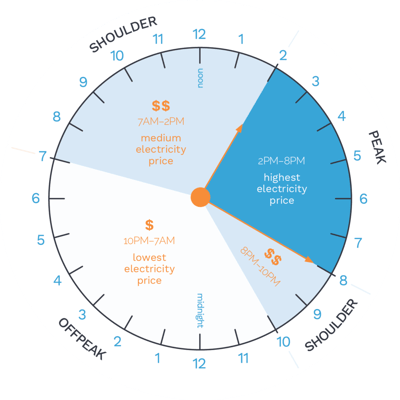What is time-of-use billing?

We’ve all heard the expression that time is the greatest thief of all but what if it wasn’t? What if you could make time work for you when it comes to getting your electricity bills down?
Most of us have signed up to a ‘flat rate’ electricity tariff with our power companies, as they’re the simplest choice. But for people that are willing to change when they use electricity in their most power-hungry appliances they can result in bill savings.
So, what is a TOU tariff and how does it work?
A tariff is the pricing structure used by your electricity retailer to calculate your electricity bill. There are a variety of tariffs, the most common being;
- Single flat rate where the retailer applies the same rate at all times. Rain, hail or shine, you pay the same amount.
- A flexible or time-of-use tariff where the price varies depending on the time of day;
- A multi-flat or block tariff which may include stepped pricing which decreases the more electricity you use - eeep!
- A feed-in tariff for customers with solar panels. This is where you receive a small credit for each unit of electricity your solar system exports to the electricity grid.
So, how do you work out if switching to a TOU plan will give you the best value? Well, for starters, a typical TOU plan looks like this:

To get the most out of a TOU plan you need to avoid using electricity during "peak" (highest electricity price) periods, and try not to use much energy during "shoulder" (medium electricity price) periods. If you can do this, then your electricity meter will record your electricity use as occurring during those times (as long as you have the correct metering installed).
Your electricity bill will then show you how many units of energy you used in each period and multiply that number by the price of each unit for the period. This will contribute to the total of your bill.